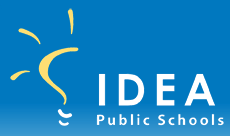Apologize for the CI hiatus. I have six PhD students that want to graduate, which translates to about 1,000 pages dissertation reading these past few days.
I recently had a conversation with a conservative Harvard-trained attorney last Saturday in Houston. We were discussing Finland (I blogged about Finland a few weeks ago) and her point was that the United States and Finland are not comparable. I noted that Finland was discussed by school reformers because of their turnaround over the past few decades, but you know what, you don’t have to go to Finland to find model schools and for an example that money matters. There are those that are always arguing the meme that “money doesn’t matter” for US schools. What is interesting is that we have to look no further than the “choice” movement for evidence that money DOES matter. Without further ado, a top ten list of evidence from the “choice” movement that money does matter.

10. Eric Hanushek. Who is he? Here is his Wikipedia’s bio:
Eric Alan Hanushek (born, 1943) is a Paul and Jean Hanna Senior Fellow at the Hoover Institution of Stanford University. He is an expert on educational policy, and the economics of education. His research spans both the economics of school policy and the impact education on individuals and on economies… He is perhaps best known for the controversial assertion that “money doesn’t matter”—that is, he says that the amount of money spent in an American school district is not related to the amount of student learning in that district—and he is often called to testify in court about school funding schemes.
Ever wonder what the public schools in Eric Hanushek’s neighborhood spend (Palo Alto) compared to the state of California? Well, it turns out that Palo Alto schools per pupil spending is about 35-40% more than the state average. There are perks to being able to choose to live in a home valued at more than a million and have excellent public schools to choose from…

9. Magnet Schools. The public school choice that almost everyone is okay with— yet they are not cheap. For example, in Connecticut, magnets received 25% more funding than traditional public schools.

8. Knowledge is Power Program Charters (KIPP). They know that money matters. In a recent post, I discussed that KIPP has raised approaching a half a billion dollars over the past decade.
In sum, across the nation, since 2003, KIPP has received $308,999,543 from foundations, corporations and individuals. You can see the national spreadsheet here. KIPP in Texas has acquired about 25% of those monies— $75,981,765 from foundations, corporations and individuals. You can see the Texas spreadsheet here.
In my response to KIPP’s critique of our peer-review study of their African American attrition, I stated:
KIPP is incorrect. NEPC also thinks so here. Its hard to argue with publicly available data that they themselves are required to report by law. Per student revenue for KIPP Austin ($17,286) and KIPP Houston ($13,488) relative to Austin ISD ($10,667) and Houston ISD ($10,127) is readily available online each year from the State of Texas. However, considering the current school finance debacle in Texas, where approaching $6 billion was cut from education in the last legislature, in retrospect, I think KIPP should be applauded for spending more on education…
KIPP, a leader in the corporate charter “choice” movement, gets it. Money matters.

7. Harlem Children’s Zone. The New York Times described the Harlem Children’s Zone:
President Obama created a grant program to copy his block-by-block approach to ending poverty. The British government praised his charter schools as a model. And a new documentary opening across the country revolves around him: Geoffrey Canada, the magnetic Harlem Children’s Zone leader with strong ideas about how American education should be fixed.
In recent discussion with Pedro Noguera, he mentioned that the HCZ was spending between $16,000 and $20,000 per kid to provide wrap-around services in their charters. Clearly, to Geoffrey Canada and parents that choose HCZ charters, money matters.
6. Eanes School District. You don’t have to go to an elite Bay Area district, you can see bare inequality in most every town. On either side of the tracks, highway, north versus south… etc. In Austin, different communities are able to provide different resources only miles apart. Bloomberg reported:
The Eanes school district in suburban Austin, Texas, spent $7,921 per student last year. Twenty miles away, the Pflugerville school district, whose population includes far more low-income students, spent about $1,000 less, resulting in lower teacher salaries and more children for every special education teacher.
Maybe you are thinking that $1,000 isn’t much of a disparity… by classroom it could be a disparity of $25,000, between schools $400,000. For a district, well, you get the picture.
Average home price in Pluggerville: $139,000
Average home price in Lakeway (Eanes): $520,000
Okay, maybe this one doesn’t belong here because for people who can’t afford an $500,000 mortgage, Eanes isn’t a choice.

5. Tom Torkelson, IDEA CEO. Teach For America was so thrilled with their alum, that they gave Torkelson the $10,000 Peter Jennings award. They state on their website:
Tom Torkelson, JoAnn Gama (both Rio Grande Valley Corps ’97), and Jeremy Beard (Los Angeles Corps ’95) were honored in 2009 for their work with IDEA Public Schools, which has achieved extraordinary academic results with low-income rural students in the Rio Grande Valley. Torkelson and Gama founded the network, while Beard led its high-performing Donna campus. Since 2009, Torkelson has continued to serve as CEO of IDEA.
The Monitor reported that the IDEA corporate charters management board gets that money matters, paying CEO Tom Torkelson to the tune of $300,000. There is another $100,000 on the table in benefits and bonuses.

4. Parent Trigger. In the post Parent trigger laws: Wolves in sheep’s clothing and astroturfing I wrote:
In Texas, Texas Families First has signed up a variety of legislators to support HB300. Who funds Texas Families First? hehehe. Who the heckfire knows… Because if you look up their 990 you only can find that “Citizen Leader Alliance” (which shares the same Houston P.O Box with Texas Families First) has $1.5 million per year at their disposal (Thanks to Sylvia from Austin for hunting down the financial information). Wow. My best guess is that families in Houston (or Texas) have not banded together and saved their pennies to raise those funds in a grassroots fashion because it would be easily trackable online. Which means that probably corporate-minded donors (similar to Parent Revolution) are funding “Texas Families First.” (More on TFF’s ideology later in the week)
On March 26, 2013 at 9:41 am, Jamie Kohlmann Texas Families First CEO wrote in a response to the astroturfing blog post:
First, as for our donors–CLA has had 50 or more contributors from all corners of the state, but we are only one of several organizations supporting HB300 as part of the Texas Families First Coalition.
I responded:
I did some math. $1,500,000/50=$30,000 average. Those are very generous Texas (families?) donors from all corners of the state.
In the post The Teat: Where does parent trigger movement get their $?, I wrote:
Who is paying the bills for the parent trigger movement? Cohn found that since 2009, several corporate minded foundations have poured millions into Parent Revolution, a Los Angeles advocacy group that is in the forefront of the parent-trigger campaign in California and the nation.
Multimillion dollar contributors include the Bill & Melinda Gates Foundation ($1.6 million); the Laura and John Arnold Foundation ($1.5 million); the Wasserman Foundation($1.5 million); the Broad Foundation ($1.45 million) and the Emerson Collective Education Fund ($1.2 million), founded by Laurence Powell Jobs, the widow of former Apple CEO Steve Jobs.
But the Walton Family Foundation is by far Parent Revolution’s largest benefactor, contributing 43 percent of the $14.9 million total.
Clearly money matters in the parent trigger movement.

3. Parent Trigger II. In the parent trigger flimflam, I mean film, Won’t Back Down there is a scene where the union rep takes the lead parent organizer (played by Maggie Gyllenhaal) to a gleaming private school and insinuates that they would bribe her by paying the exorbitant tuition for her daughter. What I kept thinking during the scene was why didn’t she have a gleaming school in her neighborhood? Why did the choice of an expensive gleaming private school even need to be on the table? Ask the average parent who chooses to send their child to a private school that has resources that far exceed their neighborhood public schools, money does matter.

2. Vouchers. Speaking of private schools, there are those that want the public to fund their child’s private school tuition (or with neovouchers, they seek to re-route tax dollars into a “scholarship” account). They argue that since those that can afford private schools have access to them, that we should fund part of the private school tuition. The reason we know that money matters to private schools is that that vouchers typically require add-ons because they rarely cover the entire cost of attending a private school. Some policymakers love the idea of vouchers because they move the responsibility of the cost of educating children from the state budget to the family budget and from the state budget to the budget of church parishioners.
1. Your State Legislature. Recently your legislature cut (X billion) from public education. At the same time, they are considering/already legislated parent trigger, more charters, and vouchers. The same jokers that cut the money are telling us that our inadequately funded schools are inadequate.
Please Facebook Like, Tweet, etc below to share this discussion with others.

yes yes
LikeLike
In answer to a response on “public policy network” where it was said; We can’t do anything without money!
Yes money matters! The issues involved have to do with how the money is used and how the money is earned, generated, collected (taxes) … whether taxes, (government money is needed) or will “free” enterprise take care of the needs? Fundamentally, these are all economic questions, not money or finance questions!
Fundamentally, can K-12 education function as a free enterprise system? Like the sale of pizza or coffee, for example? Market questions with respect to monopolies and the elasticity of supply and demand, social interest, state-national interest, safety and environmental concerns, are but some examples of why pizza and coffee remain exclusively within the realm of “free enterprise” while on the other hand education is much more complex- and a “public” interest.
In recent years in America, efforts to create “systems” that make students into commodities’ i.e., ADA: payment for Average Daily Attendance (per student) have been created. The ADA $ dollars are used by some to justify making “choice” possible at the student and parent level- thus creating a “market system” of K-12 education that while still paid for by Tax dollars (for the most part) allows “private funds” to more easily supplement school revenues- charter schools operated this way!
Many issues of equity and justice have grown out of these fundamental changes:
Questions:
Are the new “market/choice systems” fair in terms of quality distribution of educational services for all groups in society?
Are the “market/choice systems’ used to by-pass or thwart fundamental societal goals with education; desegregation for example?
Do “market/choice systems” give unfair advantages to private interests such as corporation v. the public general interests served through the ballot box and election of school boards, state legislators and so forth?
Where does private interest, parents and individual students, and public interest – the need for an educated population with some degree of civic mindedness in a Democracy intersect- leaning toward individual choice or civic and governmental led solutions?
Do concepts of “social justice” have a role in these discussions; i.e., the fundamentals of public fund distribution, and, for what purposes?
Who decides and how is it decided seems to be the question being asked:
Should it be a “private” (market/choice system) or “public” (civic engaged system) that decides how the “money” is collected and used?
LikeLike
Yes, money matters and in your last Blog I explained that in my small part of the education world in CA we are seeing children turned into commodities; roughly $6000 per child, ADA. We are seeing education staff; from bus drivers to teachers, and above, demonstrate this. We hear negative comments about neighboring schools, and negative comments about staff in those schools. Staff for example who move as employees from one system- public schools to charters who are called, “traitors.” And, of course, it’s all about money and jobs!
Above are some of the effects at the personal level. At a policy level, we have a very complex situation. CA funds K-12 education with a “single system” that, “cannot meet” the “varying needs” of students “throughout the state “ with “different mixes of students, ranging from high concentrations of low-income, disadvantaged students to concentrations of high-income, highly advantaged students” (Timer, T., 2006; How CA Funds K-12 Education, pp. 31-32).
Yet, ironically, the genesis of the CA system begins with a CA Supreme Court decision aimed to create equity; Serrano v. Priest (1971). After more than 40 years, districts and groups, including charter organizations, have begun to search for alternatives and advantages, in a “system” that is “not intuitively obvious to a layperson (as to) what difference the source of funding makes. After all, money is money.” (Timar, 2006, p. 5)
What we now have, therefore, is “the current system of school finance (system that) is cobbled together in response to various pressures over the past thirty-some years. What is missing from the resulting patchwork of policies is an underlying framework or set of principles to guide the resulting patchwork of policies” (Timar, 2006, p. 31).
Added to the mix, and not included in Timar’s analysis, is the effect of “choice” and the CA Charter School lobby, the (CCSA) CA Charter Schools Association based in Sacramento. On Dec. 16, 2011, for example, an “Action Alert” was sent out by CCSA to contact legislators telling them to defeat AB 1172 (Mendosa) as it included a provision that would allow school districts that have “negative fiscal impact on the district” to stop a new charter from taking over a recently closed school.
In my rural district, one that was until recently a unified county-wide district; two charter schools have emerged out of the ashes of a combination of the 2008 housing bubble bursting and the great recession, the lack of a financial framework and a patchwork of policies that no longer work, coupled with politics created with the new charter school movement in CA.
Note: The Bill and Melinda Gates Foundation assisted the funding of the “Getting Down to Facts” project: Timar (2006)
LikeLike